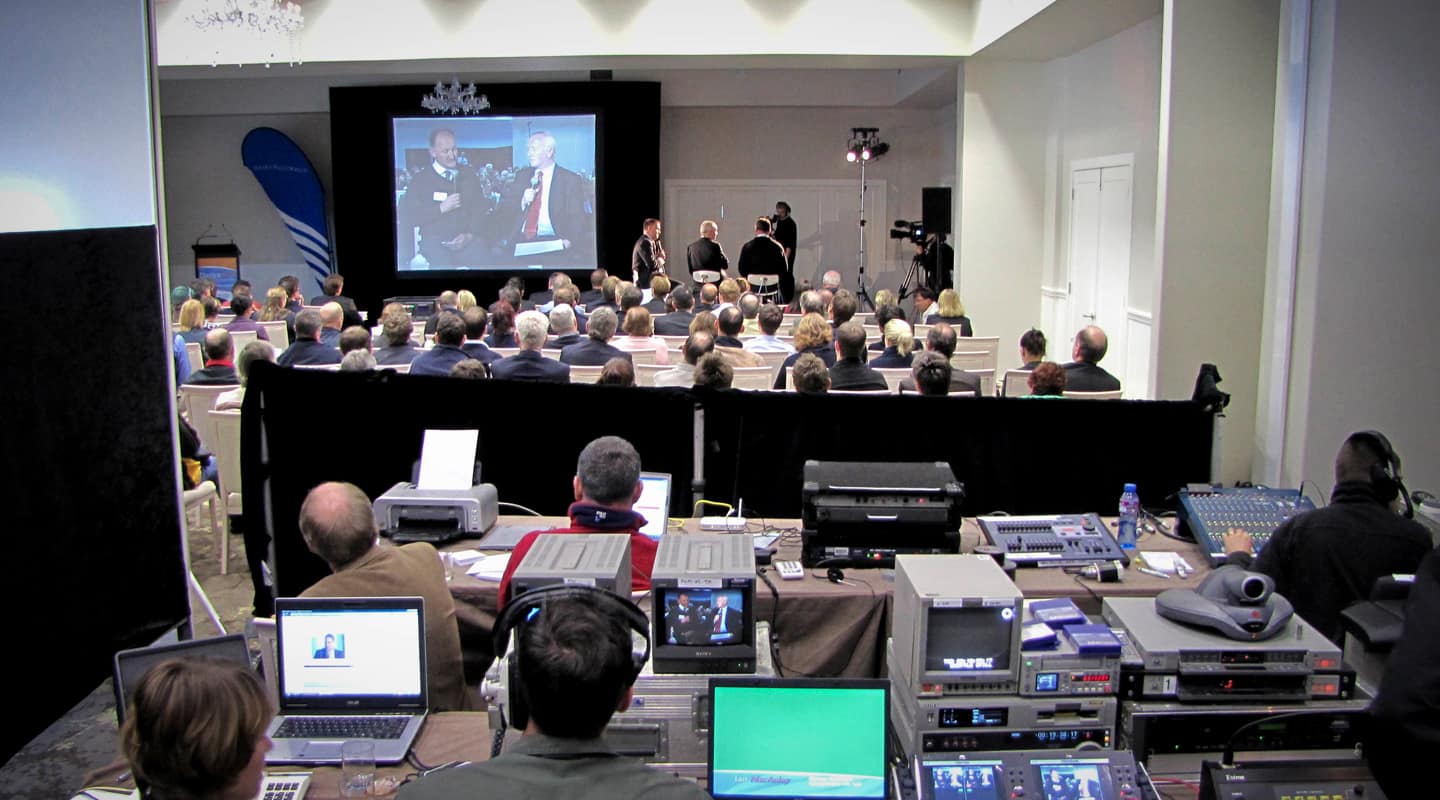
Heard it on the Bovine
DairyLive: A mooving tail of AV innovation on the hoof.
Text:/ Graeme Hague
This was going to be a video conference with a difference. For a start, the organisers wanted to broadcast a more dynamic presentation, something akin to morning news television with slick production values. Tricky perhaps, when the seminar’s primary subject is milking cows and the ensuing results, namely milk and dairy products. Needless to say, dairy produce doesn’t normally knock Iraq and the footy off ‘top of the hour’ headlines. An answer was to include information clips and short interviews with specialists from as far afield as Dubai and Hong Kong, professionally filmed and edited. One problem solved…
They were also determined to get away from the standard approach of simply having ‘talking heads’ on a large screen lecturing a largely non-participating audience. The whole idea of DairyLive was to give farmers and others involved at the (ruminated) grass roots end of the industry a real opportunity to discuss some important issues and ask hard questions of the experts on hand. However, farmers are literally few and far between and they’re pretty busy at the best of times. Getting them together in a location suitable for any kind of video link was going to require a bit more than asking everyone to jump in the ute and drive into the big smoke. Instead, to solve this problem technology had to go out into the country.
We’re talking the country type of country – some of the venues in question struggled with having enough power, let alone broadband and ISDN access. It was definitely going to be a logistical and technical challenge.
SHAKING UP THE INDUSTRY
DairyLive was initiated to respond to a series of problems faced by the dairy industry. An odd quirk of government bureaucracy meant that funding for any other kind of action had all but dried up and, in fact, only money for ‘special events’ was available. Even then, because the first proposals cited a number of separate seminars, the money wasn’t allowed. Only when someone had the brainwave to tie them all up as a simultaneous network broadcast did it become a ‘single’ event and the chequebook came out. That was the good news. The bad news was it had to be done before end of the financial year, less than eight weeks away.
Esther Price, of Esther Price Promotions, who has long experience of putting together rural and agricultural seminars, was commissioned to make it all happen. Esther first discussed the concept with Dean Lomax of Lomax Media. Lomax Media specialises in corporate and commercial video projects and could provide the kind of broadcast production values she envisaged for the event. Dean was confident he could do the job, but when it came to supplying AV gear to different locations all across Australia he turned to Derek Petersen of Totally Sound, a production company based in Bunbury, WA. Totally Sound is no stranger to conferencing equipment both large and small, and has built a reputation that sees Derek often crossing the Nullabor to oversee events on the east coast. But even Derek recognised that while he could certainly put together the gear required (and perhaps plug in the odd cable or two), DairyLive would benefit from the networking expertise of Tony Routledge at the Perth division of Audio Visual Image’nation, better known as AVI. AVI was the last link in a team of specialists brought together for the program – a bit like Ocean’s Eleven without the glamour of Brad Pitt.

SEEN & HERD
That program was a live audio and video link to eight locations: one each in Western Australia, Queensland, Tasmania, New South Wales and South Australia, plus another three in Victoria including what would be the main controlling hub and source for a majority of the broadcast material in Warrnambool. Just in case things got too simple, a connection was established to Antwerp (yes, that Antwerp) for an address by the president of the European Association of Dairy Trade and another to Chicago for a quick chat from one of the head honchos of Kraft – the cheese folks, not the electro-robots… okay sorry, that was Kraftwerk. [As if all those cheesy cow jokes weren’t enough – Ed]. Finally, a continual feed would be sent to the internet and a website for interested viewers to tune in. By the way, with everything kicking off at a respectable 10am in NSW the Chicago crew was on site at 8pm the previous evening, while in Antwerp it was 3am – a tough short straw for the Belgians, but I guess someone had to suffer the scary alarm clock.
Before anything could be switched on, a lot of work had to be done and there wasn’t much time to do it in.
At first it was believed that IP connections between all the venues would be the best method, offering superior bandwidth and speeds, but while a certain telecommunications provider (who shall remain nameless… but let’s call them Telstra for convenience sake) could offer a suitable IP network they couldn’t guarantee it – a subtle but important distinction. So a decision was made to utilise ISDN connections instead – not quite as capable but far more reliable. Now Tony at AVI could go ahead and place work orders for the ISDN ports to be installed at all the locations – not a routine exercise in itself… new cable can easily take weeks to materialise, as we all know. As it happened, Telstra came to the party, except in a few locations where a rather liberal interpretation had been applied to what constituted an accessible connection point and local contractors had to be hurriedly called in to add extensions.
LINKS & COMMS
The final network was a slightly daunting mixture of IP, ISDN and PSTN links. To take the fear factor out of the equation, AVI recommended using the bridging services of Thomson Reuter, who has an impressive Master Control Room (MCR) in Pyrmont, Sydney. The MCR is reputedly the largest and most technically advanced internet streaming broadcast facility in the southern hemisphere and I doubt anybody’s going to argue (I wonder if they can tune into the footy?).
Three of the venues were connected to AVI first with ISDN, before being routed to Thomson Reuters via an IP connection. The other five had direct patches into the MCR via their own ISDN links. All eight used a dedicated PSTN link to provide straightforward talkback-style communications between everyone, a facility that was to prove more important than expected. Finally, the connections to Antwerp and Chicago were created with IP.
While all this was being put in place, Derek Petersen at Totally Sound was overseeing the supply of the screens, cameras, microphones and staging to all the locations. The Warrnambool venue needed particular attention. As the hub of the broadcast it required a full studio vision mixing, captioning, graphics generation and replay system, to assemble the feed to be sent to Thomson Reuters for distribution.
WRANGLING THE MEDIA
Lomax Media was busy compiling the pre-recorded material from the interviews conducted all over the world. Overseas production houses had been given specific (and not particularly difficult) direction in regards to format, but some of them still managed to keep Dean up until the wee hours of several mornings turning the files into something workable and a few ended up in the virtual trash can. Dean and his staff were also putting together a library of video transitions, sub-titles and headings, and other visual effects to smarten up the vision. This included an introduction sequence that required more than 90 layers in an Adobe After Effects project.
Everything was transferred to digital tape with a second machine ready for backup, plus identical files were on standby in a DVD player and Dean had a laptop computer powered up, just in case. If the Boy Scouts handed out Redundancy Badges, Dean would probably earn enough to carpet his office.
The actual running of the DairyLive seminar required, as you’d always expect, a lot of behind-the-scenes stage organisation. Adding an interesting element, all the venues had their own camera crew and a master of ceremonies (usually a local celebrity, such as an ABC radio jock) who received cues to properly announce all the various segments. During question periods both an audio and video feed was sent with the MC introducing the questioner to the entire network’s screen audience. This is where the PSTN comms link really came in handy, because the one thing that couldn’t be sourced was preview vision from each place. Requests were called through on the talkback and live vision was instantly switched over with the fervent hope that nobody on the other end was doing anything inappropriate.
THREE GOOD FRIESIANS TO BE IMPRESSED
Just about everything for DairyLive went smoothly all day, a testament to the skills and professionalism of everybody involved. The only glitches were that the website set up as a portal for viewing the broadcast was hit by an unexpected level of demand and struggled to cope, plus for a short while the WA venue suffered some signal degradation back to Warrnambool during a question time. However, they received a good signal from Warrnambool all day.
This type of broadcast seminar isn’t the first of its kind and it certainly isn’t the largest. What did make it notable are three things. Interconnecting a number of capital city locations is almost easy and similar levels of infrastructure can be found in many regional cities. However, DairyLive required a network to some seriously under-resourced locations, and achieving that seamlessly and reliably deserves recognition. Also worthy of a thumbs-up was the effort to ramp up the presentation with TV-like production including hosts and live, talkshow style content in front of a live audience at all of the venues. Finally, the level of teamwork between the forty crew from the participating companies was remarkable not so much for their ability to work together, but rather for the respect shown to each other by stepping back and letting everyone make their contribution. Sometimes when the pressure is on, being patient and getting out the way can be the hardest thing to do.
DairyLive was a success and set a benchmark for reaching out to distant communities and industries that are run by small individual concerns like dairy farmers. It gave them a chance to collectively voice their opinions at a time when they needed to be heard, despite that time and geographical constraints could have stifled them. DairyLive should provide a blueprint for similar events.


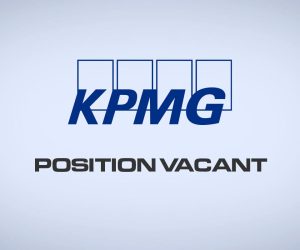

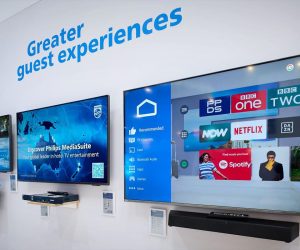




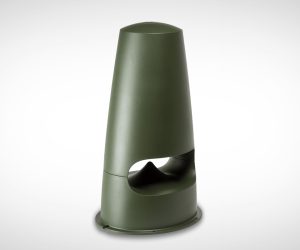
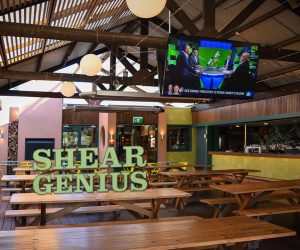




RESPONSES